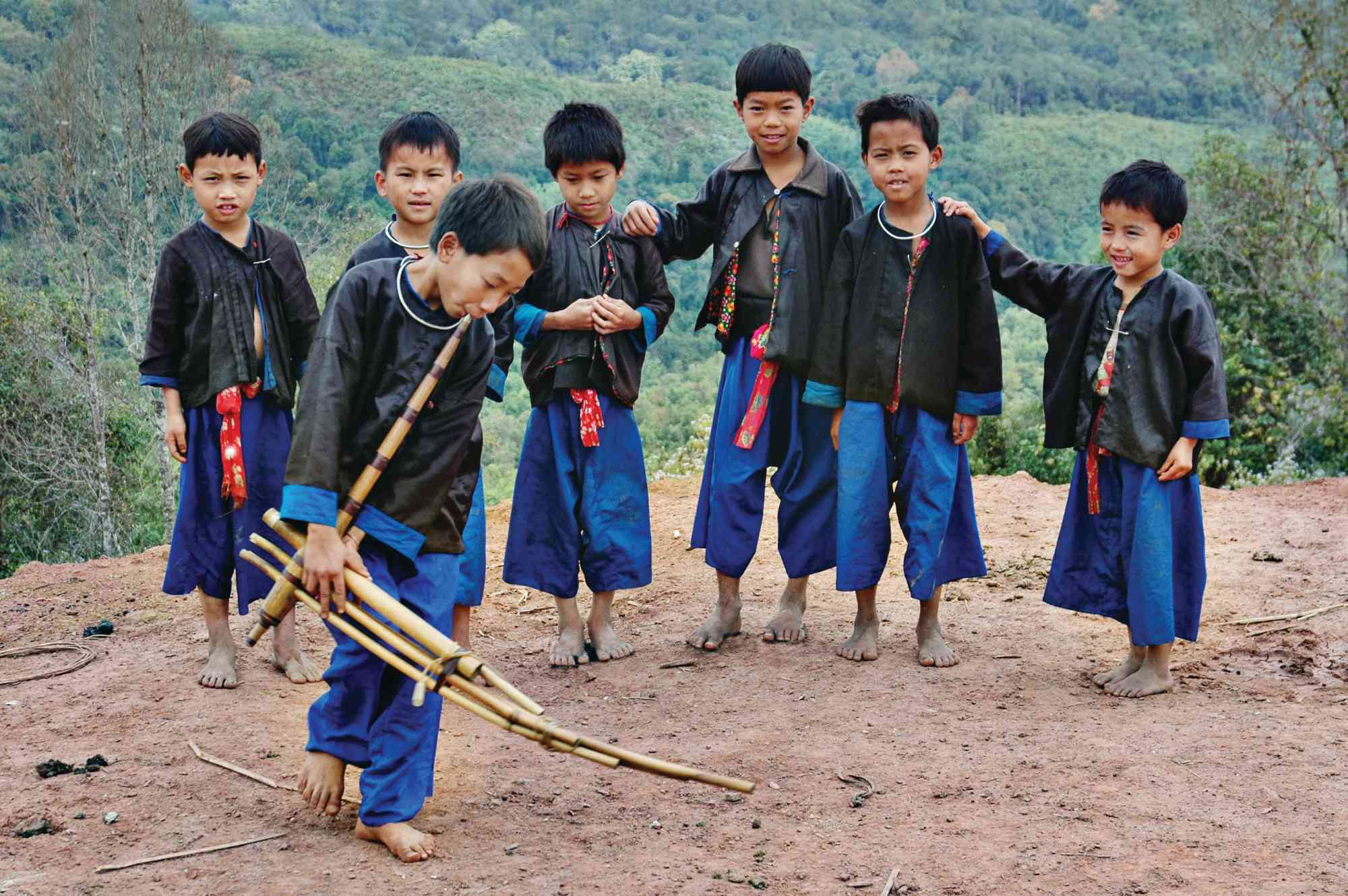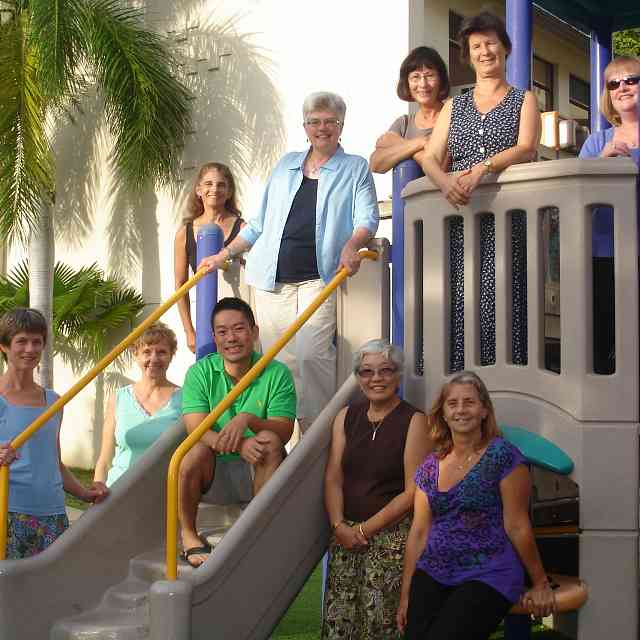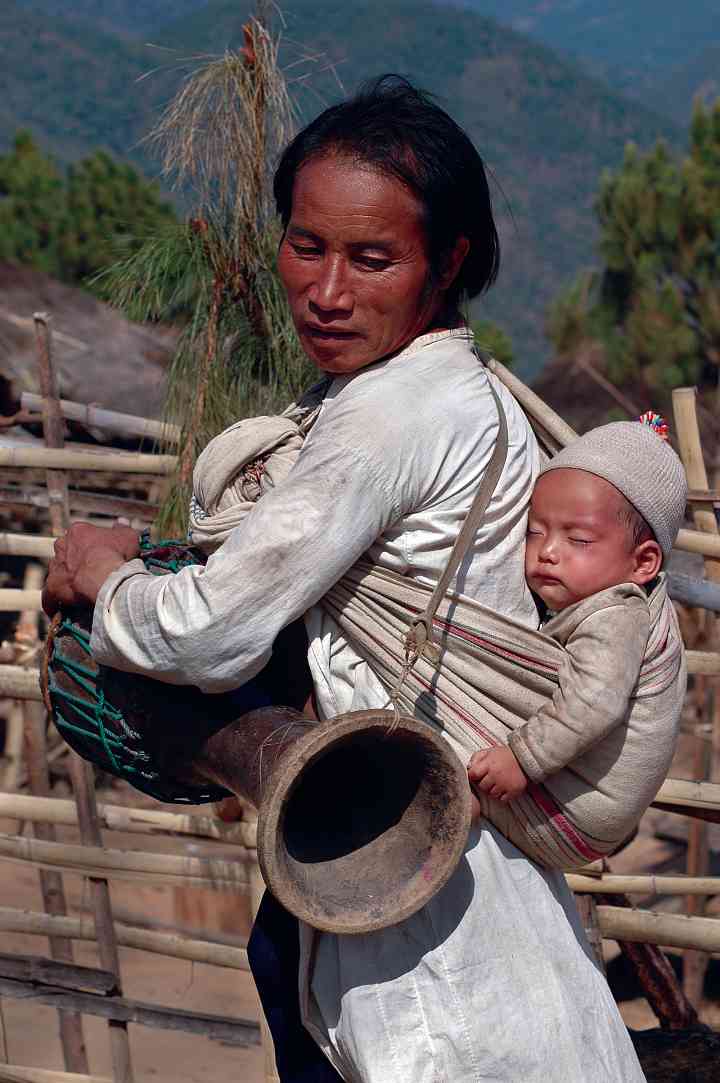
Lahu Shi man and grandchild, Harvest Festival in Keng Tung, Myanmar/Burma, 2005
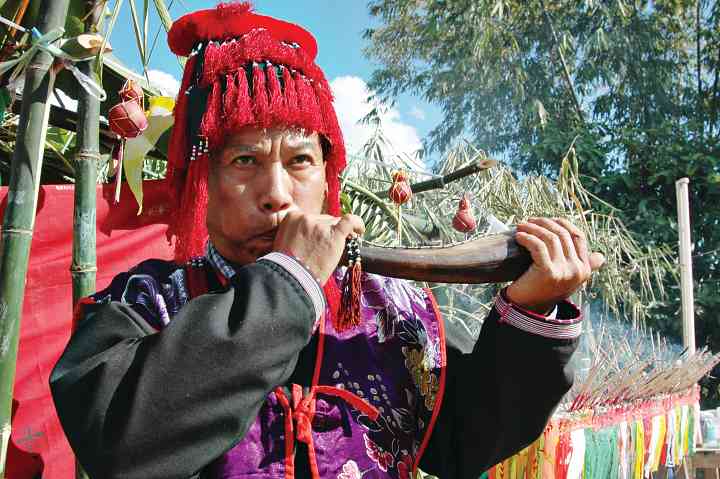
Mien priest, ‘an Hung Festival, calling deities, Phayao, Thailand, 2007
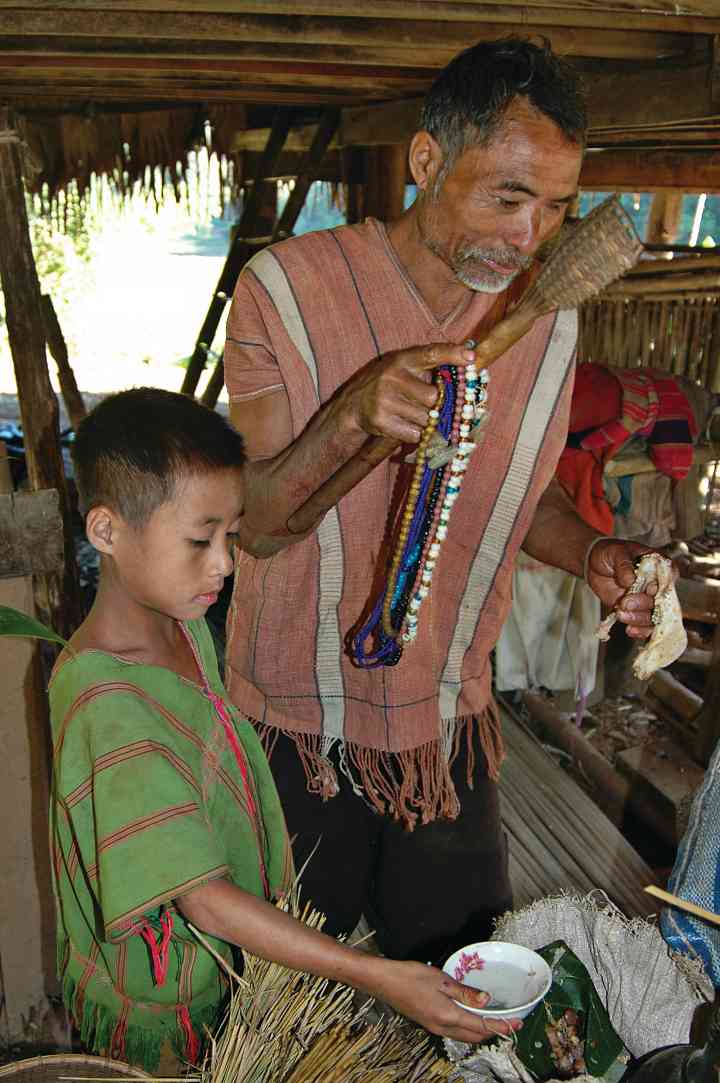
Karen father and son harvest ritual, Mae Hong Son, Thailand, 2008
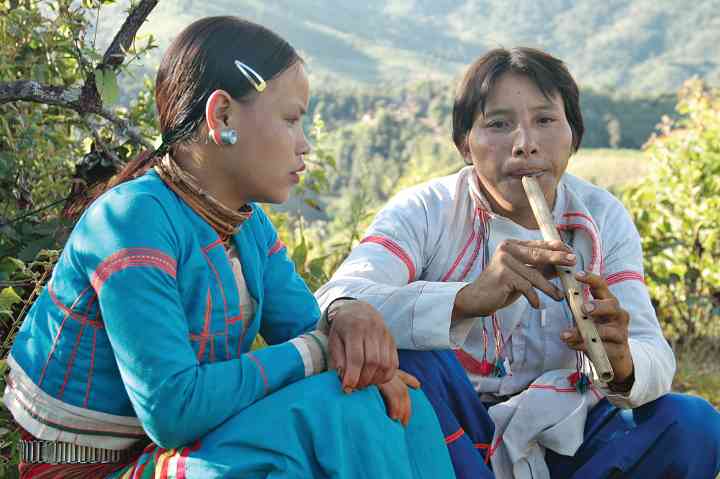
Lahu Shi couple, courting ritual, Song and Tae Lae flute, Keng Tung, Myanmar/Burma, 2005
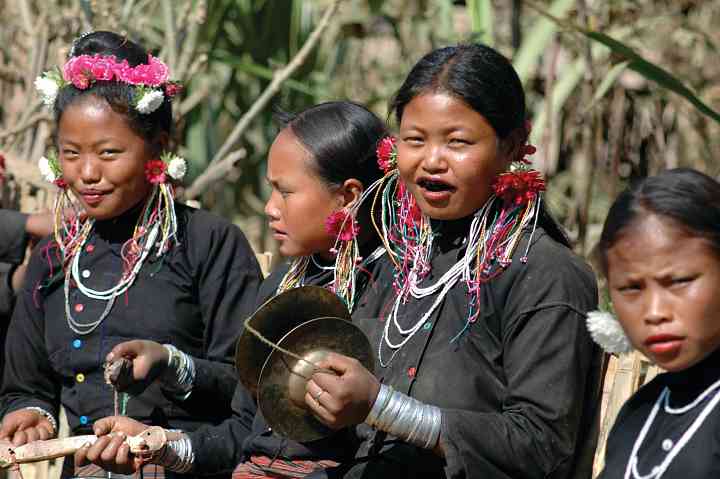
Eng women, Festival of the Hunt, Calling Spirits, Keng Tung, Myanmar/Burma, 2005
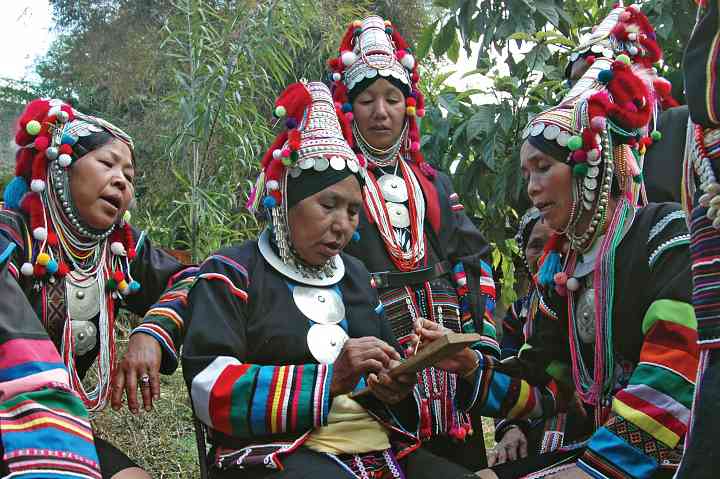
Akha Ulo women, funeral rites, Chiang Rai, Thailand, 2009

Lollopho girls dancing, New Year Festival, Muang Sing, Lao, 2006

Victoria reunited with students, Chicago, 2007
The genius of Shinichi Suzuki was not in creating a new way of learning and teaching music, but rather in listening and remembering, in recognizing the principle observed by ancient civilizations that music is a living art, powerful enough to move both individuals and the masses, fluid enough to be passed on to future generations through a medium as ephemeral as melody and rhythm. Rooted in the practice of example, imitation, and repetition with the aim of developing ability and fine character, the Mother Tongue Method is nothing more than oral tradition.
Each one of us comes from a long chain of ancestors, who, no matter where our family originated, once used only songs, stories and ceremonies to communicate everything they knew about the universe. Passed from mother to daughter, father to son, shaman to apprentice, history and culture were kept alive for thousands of years through oral transmission. This way of life can still be found in many traditional villages around our planet.
That myths and music have endured aurally throughout millennia is a testament that our ears are as important, if not more so, than our eyes. For animists in preliterate cultures who live close to the land, all of the senses are crucial for survival. Listening becomes a key portal to understanding nature, members of the community and ancestral wisdom. This balance, however, has changed dramatically as modern societies acquired skills in reading and writing. The visual sense has trumped the aural as the dominant perception as advanced technology developed, overwhelming the eye to decipher an overabundance of books, journals, data, signs, television, films and computers—media which connect our world instantly into a global village.
This is not so for traditional peoples of the Golden Triangle, for whom sound remains a vital and sacred medium. In their culture all ceremonies and rites of passage are animated by tone, for music is the language of the gods. Whether marking the movements of celestial phenomena, the cycles of the seasons, or the passages of people’s lives, every melody has a distinct purpose and every instrument is specially regarded for that purpose. Music is not a means for recreation or entertainment, but rather for attainment.
The Music of the Golden Triangle
The foothills of the Himalayas that span Myanmar/Burma, China, Thailand and Laos are home to over 130 different cultural groups and subgroups, who continue to live much as their first ancestors. Here, ancient melodies and rhythms of strings, winds, percussion, and songs echo off mountain walls, across fields, and into the collective unconscious. Every boy and girl, man and woman participates in ceremonies propelled by music throughout their lives, singing, playing and dancing.
Music follows the changing of the seasons. As villagers live by farming and hunting and depend on nature for their existence, big festivals lasting many days are held during every phase of cultivation—preparing the soil, planting, the season of rain, weeding, harvesting, and the New Year—to honor the spirits of the land through communal devotion and music-making. The booming vibrations of wooden drums and metallic cymbals and gongs mark the beat for festival dancing, as dancers stomp the ground in unison to force out the evil spirits. Shamans perform rites of thanksgiving driven by sacred chants and instrumental music. All-night singing sessions that recall the history and life lessons of their ancestors create a hypnotic pulse that harmonizes all members of the community throughout the hours.
Music and ritual mark special events that occur in daily village life. A mother hums lullabies to lull her newborn to sleep. Villagers make offerings accompanied by songs and prayers of good luck when a new house is built, a spirit gate is dedicated, or someone embarks on a long journey. Shamans intone hallowed melodies and play instruments that have been specially blessed to restore good health to those who are ill.
From the first breath to the last, the cycles of each person’s life are heralded through music. Protective chants to ensure long life are performed when a baby is born. A boy and girl enchant each other through courting music, a call and response ritual lasting hours and over days, by playing the soft, sweet tones of flutes, reeds, mouth harps, lutes and harps. Weddings are magnificent occasions celebrated with great fanfare and sacred music to unite a young couple and their clans. At death, it is imperative to perform funeral rites using consecrated instruments that direct the soul of the deceased along a safe path to the spirit world.
In tribal culture, a baby, whether he be Hmong, Mien, Akha, Lahu, Lisu or Karen, is surrounded by the tones and traditions of his forebears and relives them over and over throughout his life. Tribal songs and instrumental pieces have such bearing and connection to every aspect of that child’s world and ideology that they guide, comfort and identify him as he navigates through his cycle, to be shared later with his own children and grandchildren. In this sense, music is able to connect people to something greater than themselves, linking them to those who have gone before and to those who will follow. Truly, “man is the son of his environment.”
Beautiful Tone, Beautiful Heart
The Suzuki repertoire is rooted in Western classical music, a tradition based on liturgical forms that reach back to the sixth century when it was first notated. Bach, Handel and Mozart composed their sonatas, concertos, symphonies, and requiems striving for order and harmony, inspiring the spirit of man to a higher state. This is an essential reason why Dr. Suzuki founded his method on these great works. The pieces progress in graded steps through the repertory not only for developing technical skills, but also for tapping an ever-expanding emotional sensibility. “Music exists for the purpose of growing an admirable heart,” Dr. Suzuki wrote. “What is man’s ultimate direction in life? It is to look for love, truth, virtue, and beauty.”
That Dr. Suzuki created a methodology which streamlines the transmission of written manuscripts through aural rather than written means reminds us that the repertoire he selected also includes ancestral folk tunes and lullabies, ones that he first learned by ear in Germany. He recognized the power of both mother tongue and father tradition. An inspiring mentor, as teacher, parent, or shaman, serves as a living example to emulate, passing on time-honored experience and knowledge. Recordings heard daily, which now replace the eternal loop of communal chanting, strengthen memory and facility. Repetition through the joy of playing with one’s family and friends in group lessons, workshops and concerts—our modern ceremonies—reinforces that we speak and spread the language of music fluently to others.
Immersing a child in music from birth allows tone and rhythm to enter his or her lifeblood as naturally and unselfconsciously as absorbing language, habits, or culture. When tone is living, as when passed on through oral tradition, others are able to experience in both body and soul the subliminal, expressive qualities that music conveys. In this way we are inspired by the breath and beliefs of those who first created it. This is as true today as it was millennia ago.
Coda
It is hoped that this article serves as a bookend to one written for the American Suzuki Journal ten years ago in the aftermath of the 9/11 tragedy. Entitled “Ode to Joy, Ode to Sorrow,” the piece highlighted the concert of the DePaul Suzuki Strings in the heart of Chicago to raise funds for the relief effort and, perhaps more importantly, to comfort aching souls, both of those performing and those listening, through our music. On that day, our reason for performing touched the same primal need our ancestors felt when they played music for deep solace. The chain remains unbroken.
Chiang Mai, Thailand
3 July 2011
